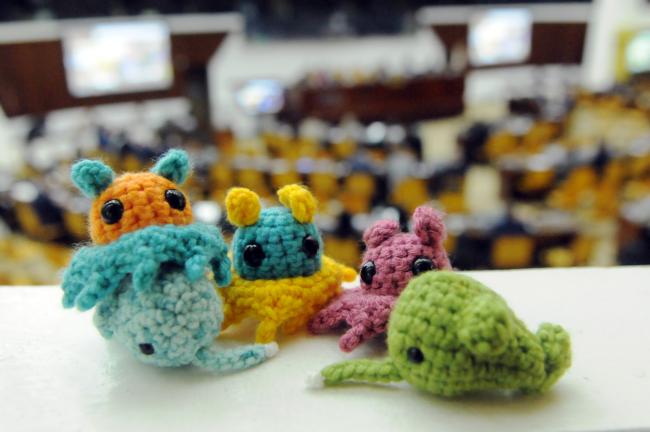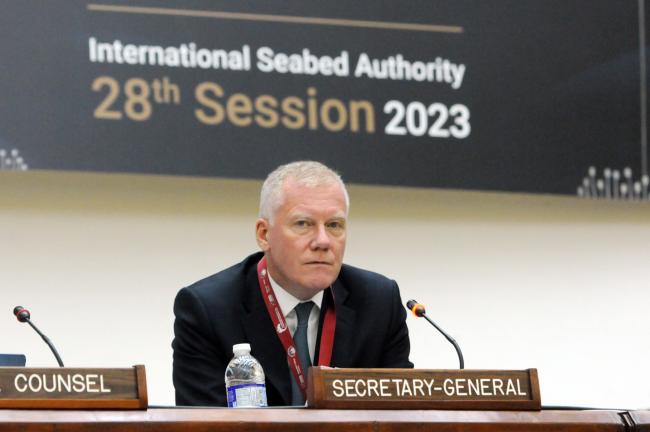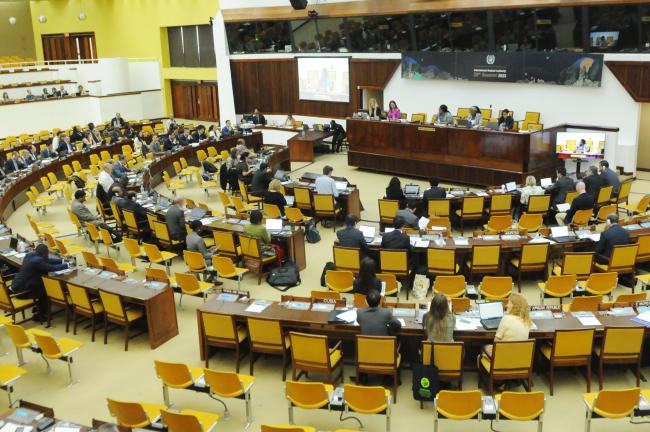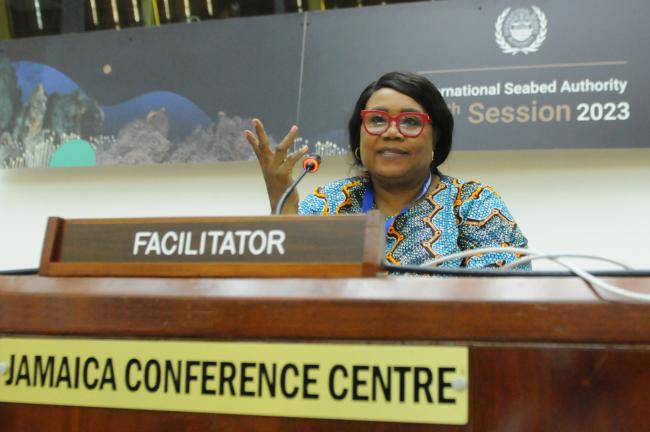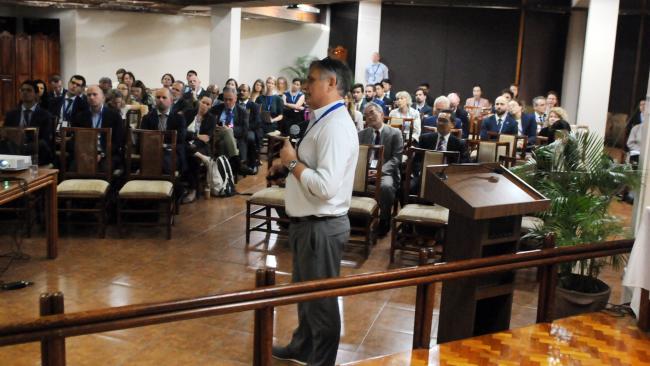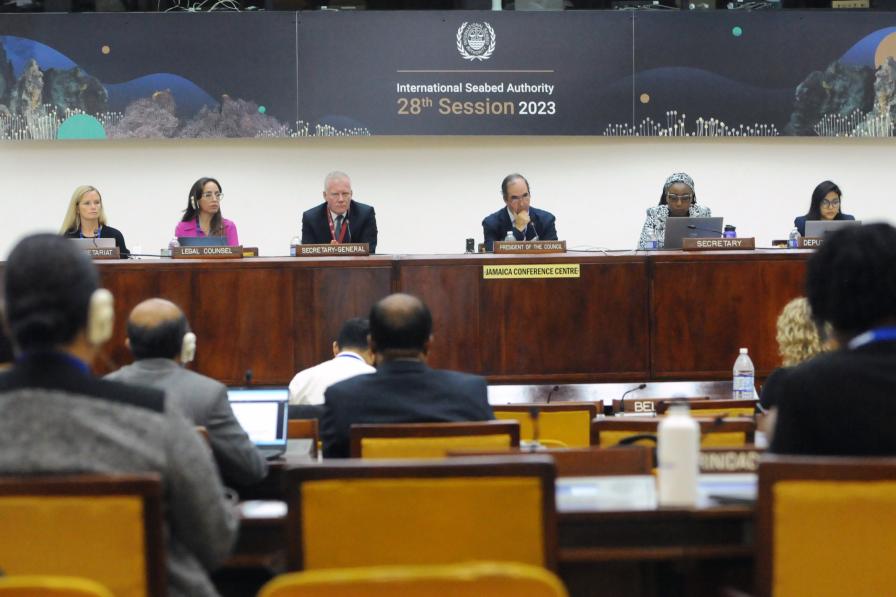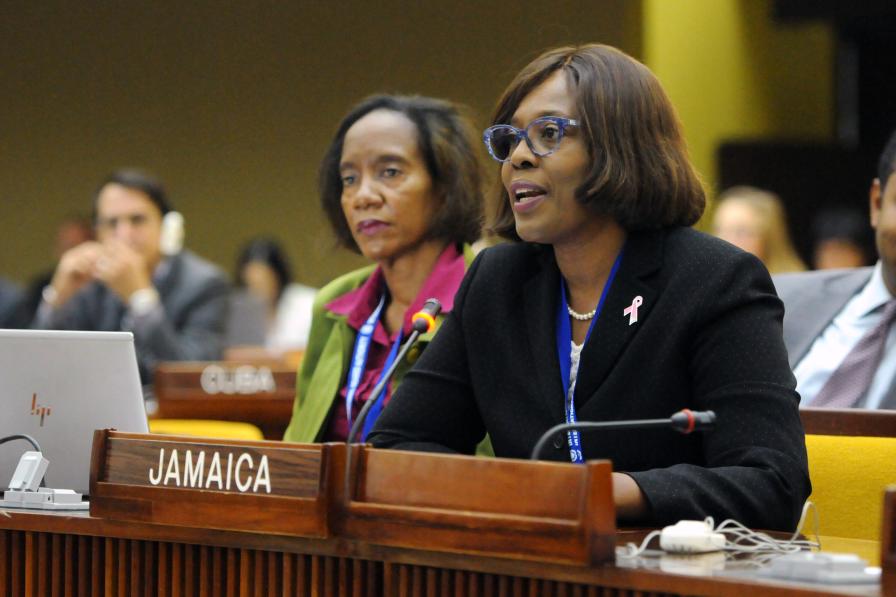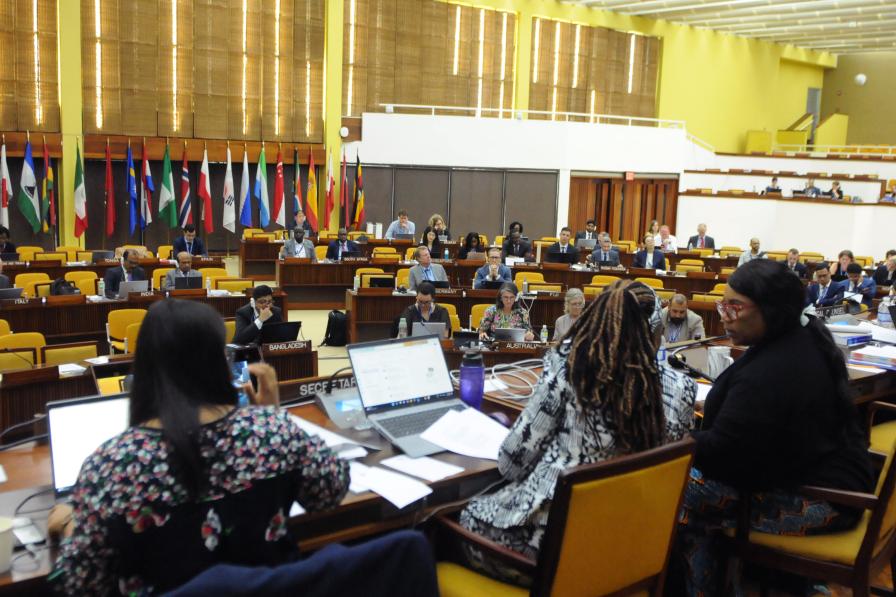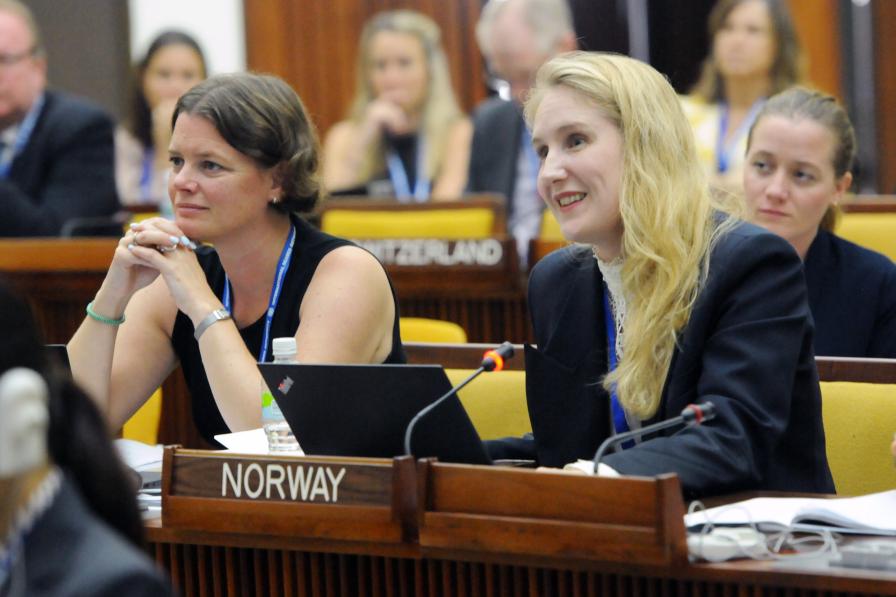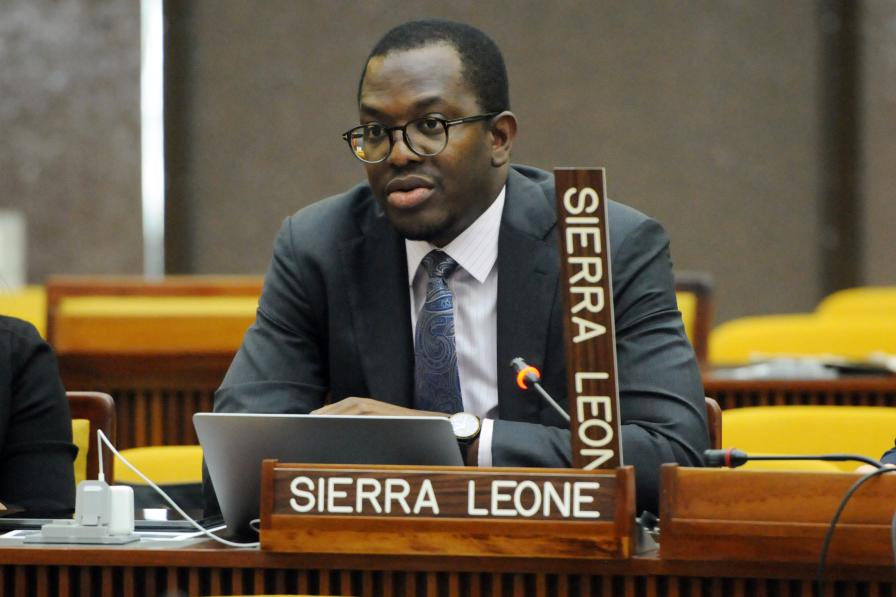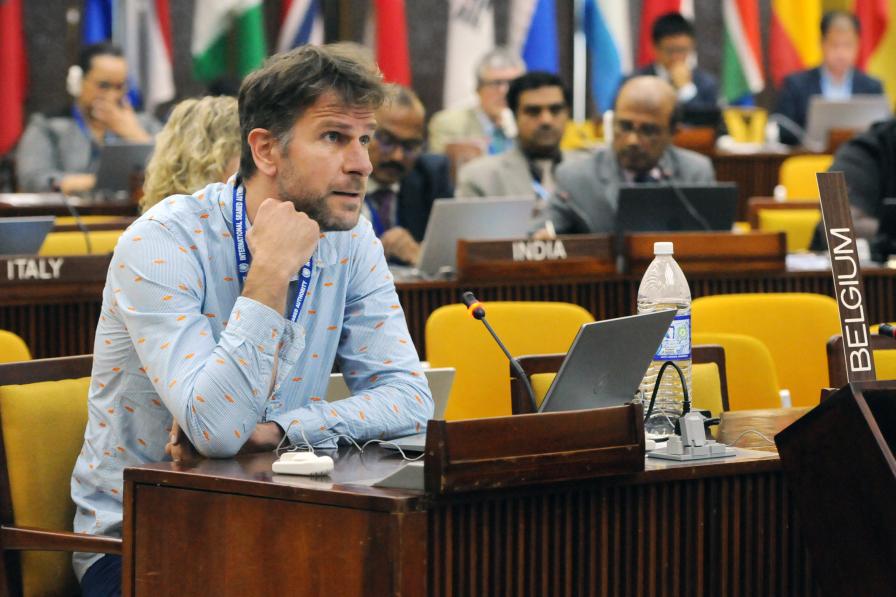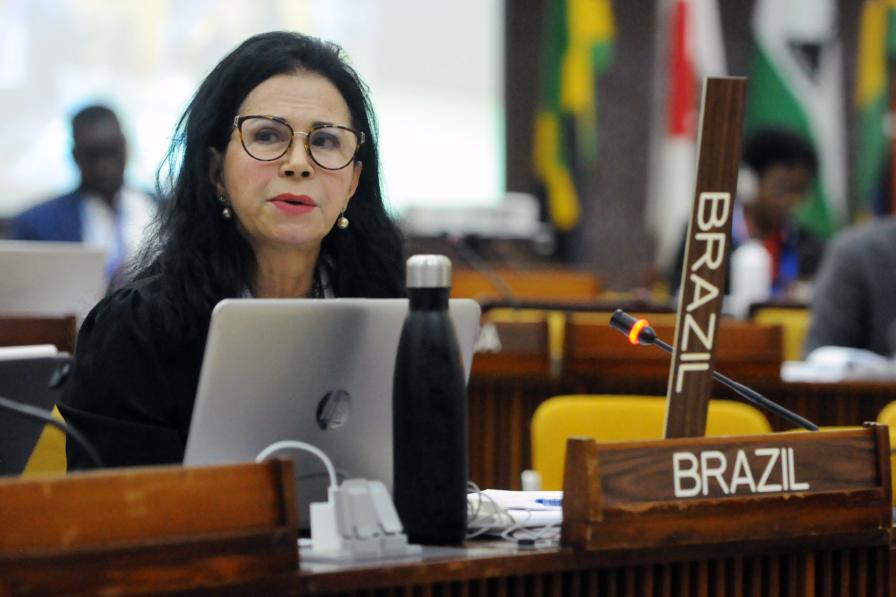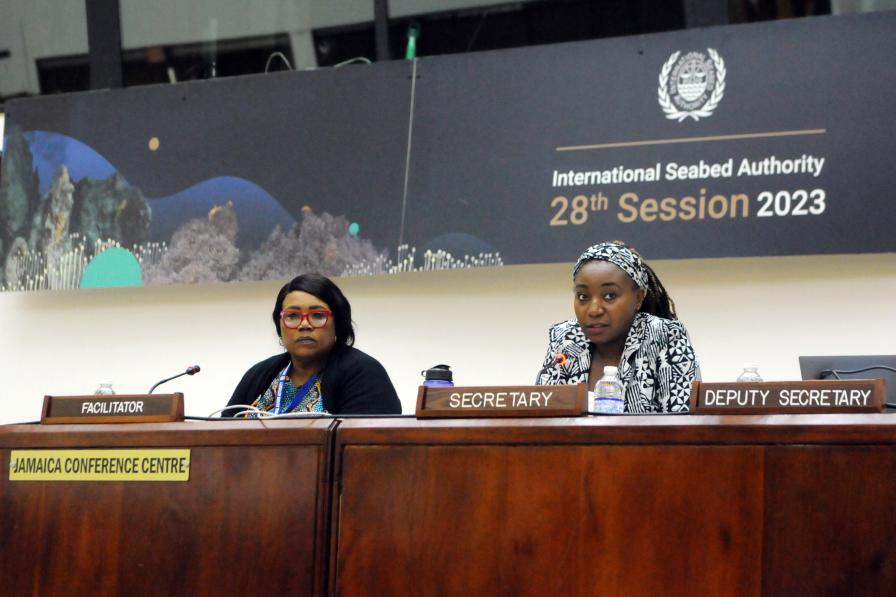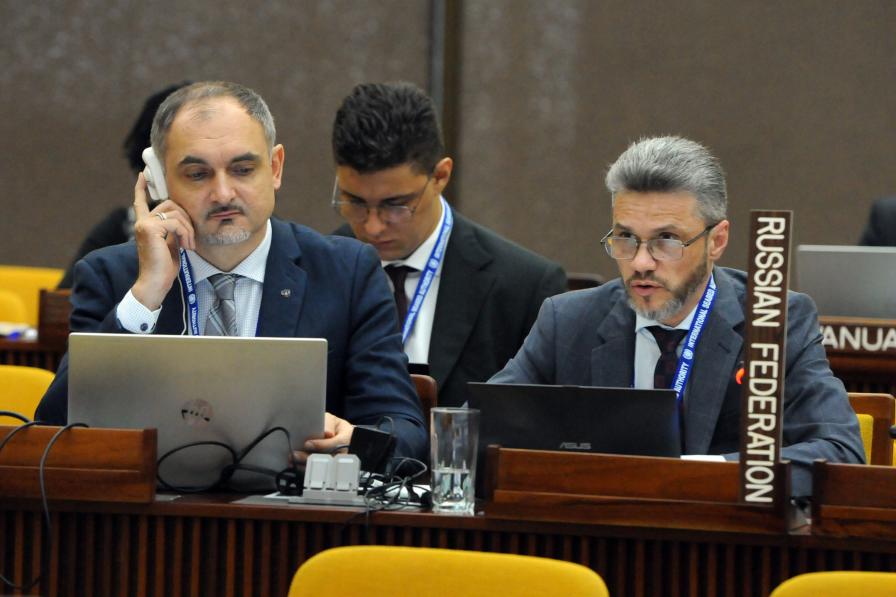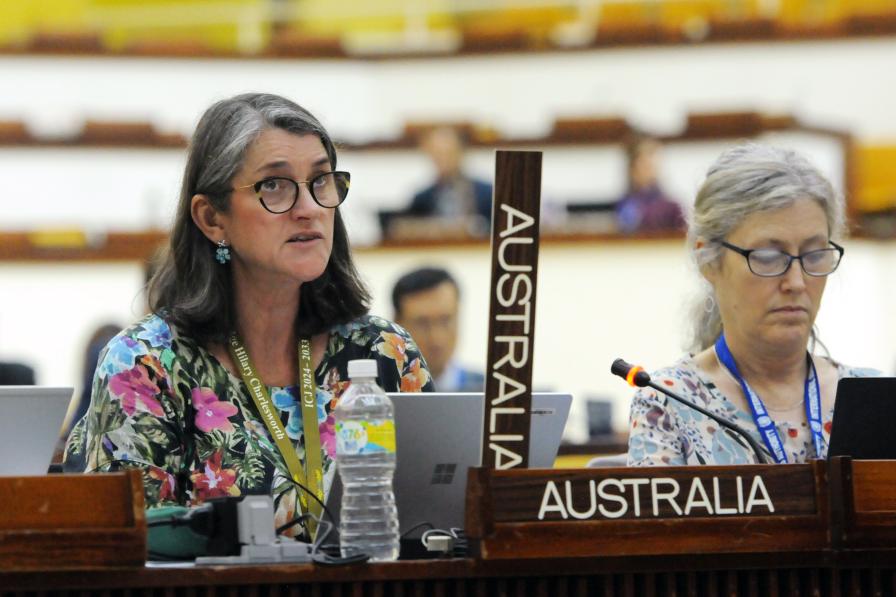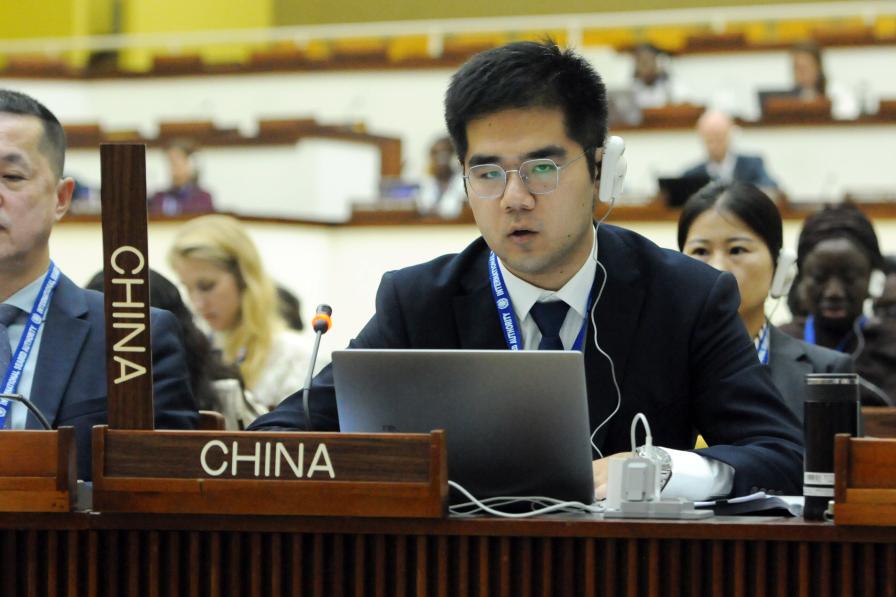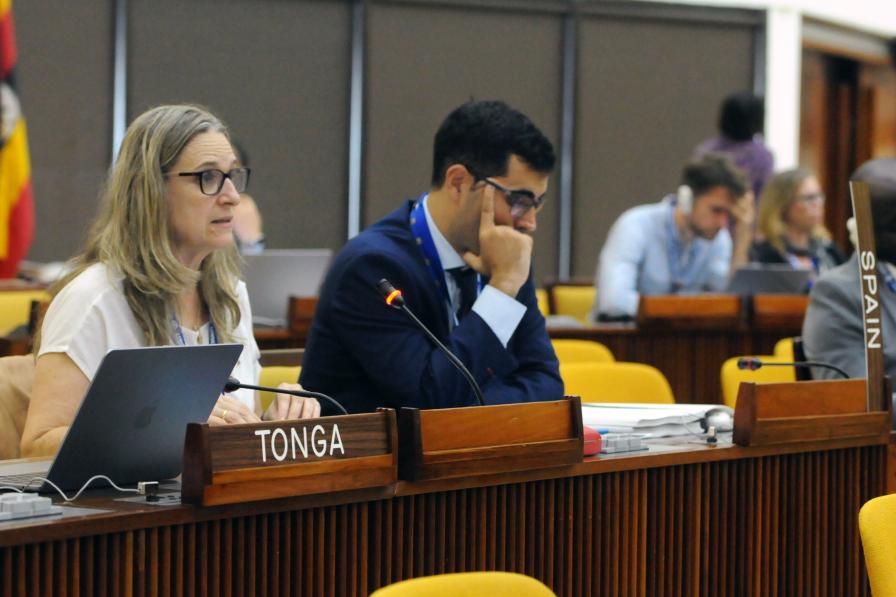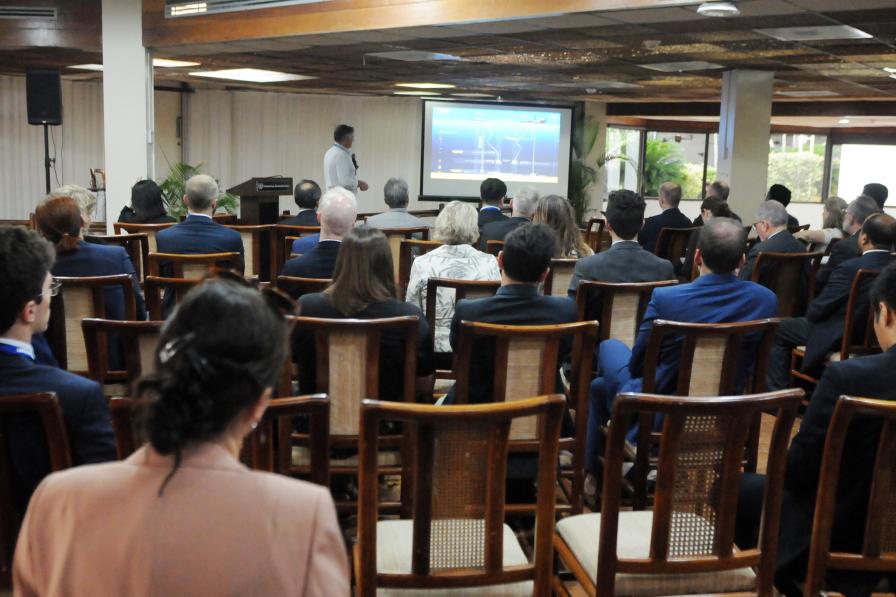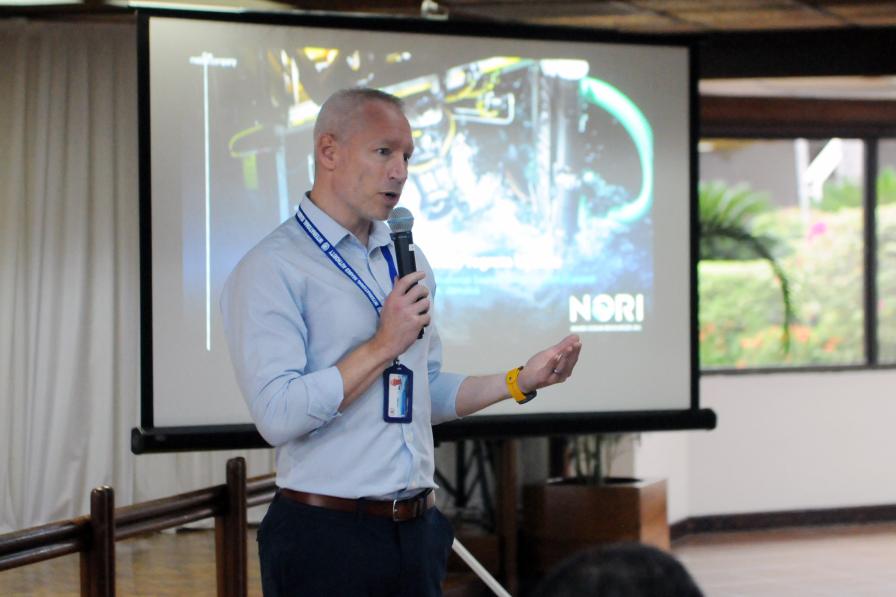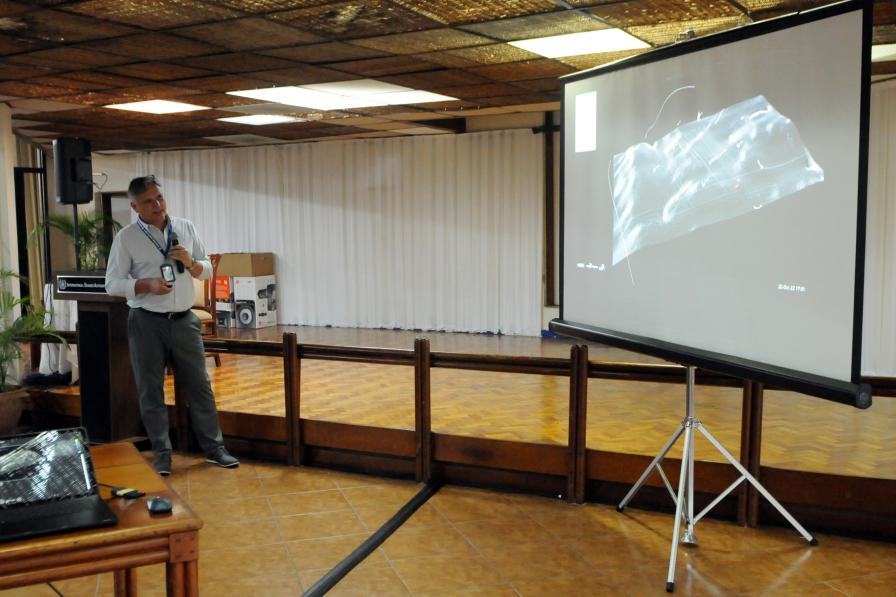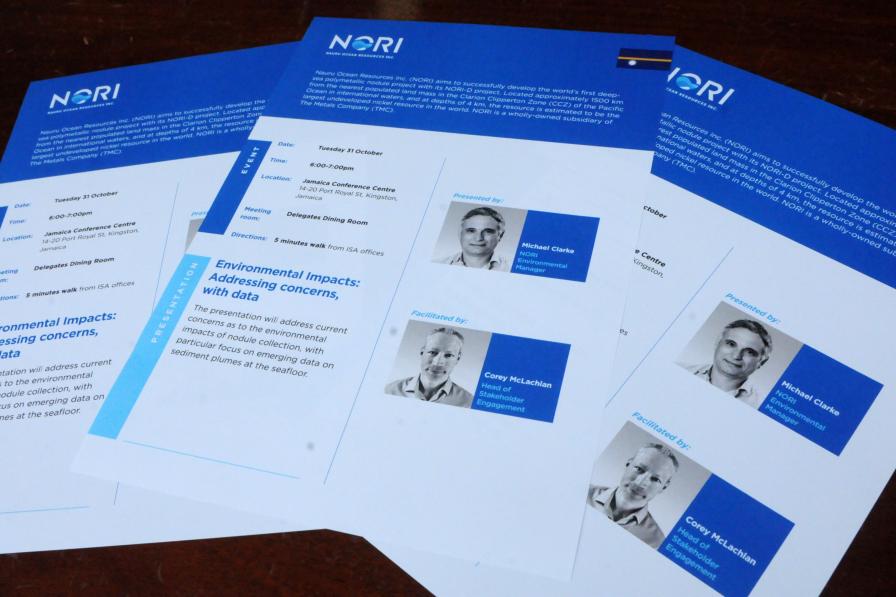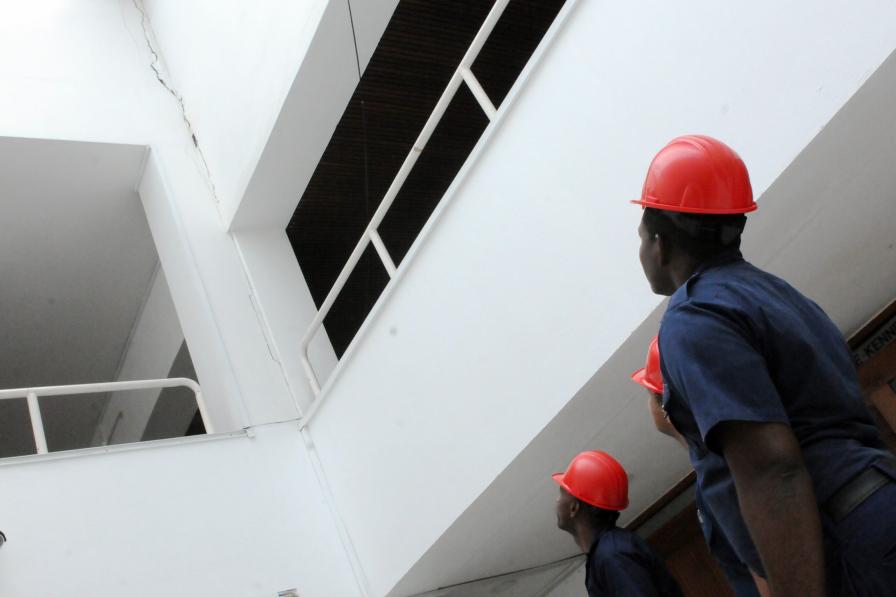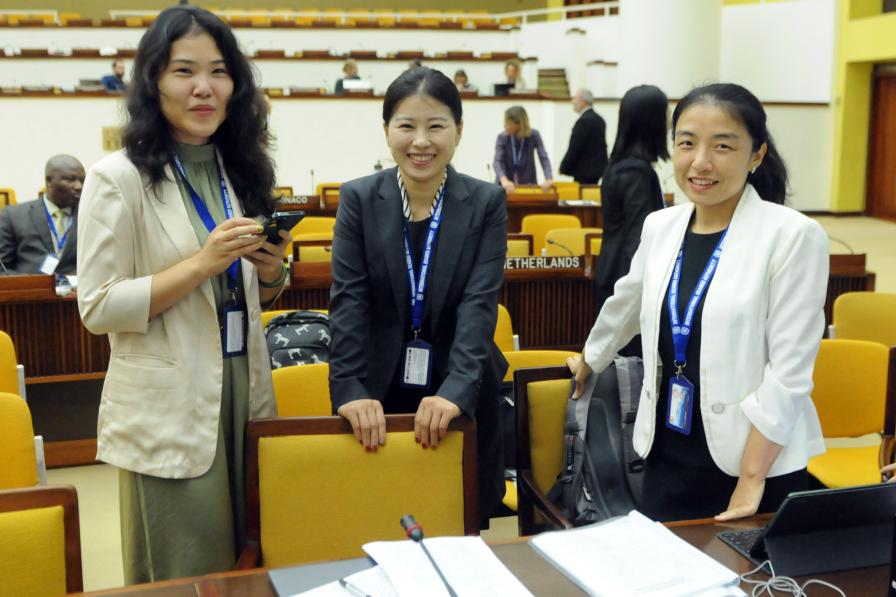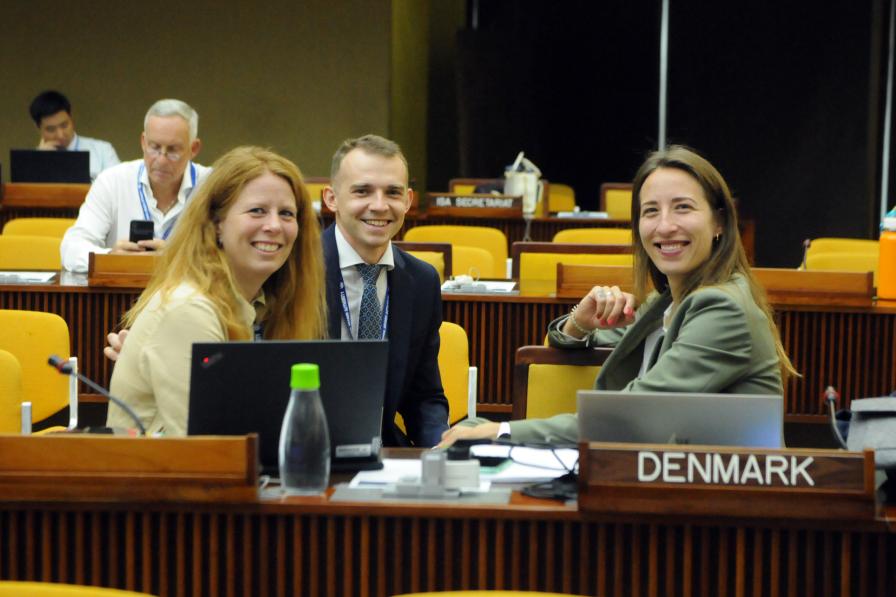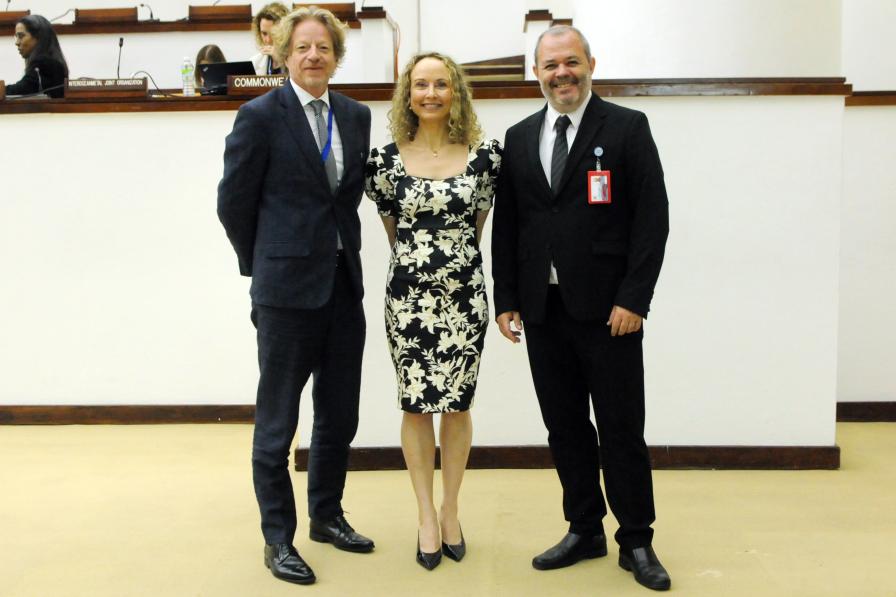Issues of inspection, compliance, and enforcement (ICE) are of paramount importance for a robust set of exploitation regulations for deep-sea mining as any set of regulations is only as good as its implementation. Recognizing this, delegates devoted Tuesday’s productive deliberations to dealing with ICE-related provisions.
Following Monday’s earthquake, International Seabed Authority (ISA) Secretary-General Michael Lodge and host country Jamaica provided safety reassurances, highlighting the security plan and protocols, and the survey of infrastructure conducted by Jamaica’s Urban Development Corporation.
Council President Juan José González Mijares (Mexico) invited Maureen Tamuno (Nigeria), facilitator of the Informal Working Group on ICE to initiate the working group’s deliberations.
Facilitator Tamuno drew delegates’ attention to the fourth revised text. She highlighted intersessional work and suggested focusing on: clarifying the affiliation between the compliance committee and the different ISA organs; the respective functions of relevant organs; and the details of the compliance mechanism to work in an independent and transparent manner.
Norway, coordinator of the intersessional group, reminded that the hybrid model includes: a chief inspector for day-to-day management; the establishment of a compliance committee within the Legal and Technical Commission (LTC); and a specific decision-making role for the Council. She noted the intersessional group held a fruitful meeting on 27 September 2023.
Delegates stressed that a rigorous inspection mechanism that guarantees uniform control of exploitation activities is key, particularly for environmental protection. They supported an independent, efficient, responsive, operational, and expertise-based mechanism. Many delegates further underscored that a compliance mechanism must be in place before any plan of work for exploitation is approved. Many stressed that the LTC should have a role in the process. However, several delegates highlighted the importance of separating the LTC’s rule-making function from the inspection and compliance functions.
Some delegates, opposed by others, stressed that the compliance committee should not be established within the LTC, noting, among other things, the LTC lacks the necessary competency and technical expertise. Some proposed establishing the compliance committee under the Council, with LTC’s participation and contribution. Others supported the establishment of a stand-alone committee. One delegation tabled a “mixed model” proposal for a compliance committee under the Council, composed of Council members and complemented by LTC members.
Some delegates supported developing a compliance strategy. Many emphasized that any ICE mechanism adopted should be subject to periodic review. A few members reserved their positions, and some expressed the need for further discussion on the different alternatives.
Facilitator Tamuno then invited delegates to address the revised text section by section, starting with Section 1 on inspections (regulations 96-101 bis).
Delegates discussed, among other things:
- modalities for the roster of inspectors, the position of the chief inspector, and the inspectors’ powers, including the need to add references to equitable geographical distribution and gender balance in the composition of the compliance committee;
- activities for promotion of compliance, including issuance of compliance notices;
- whistle-blowing procedures at the ISA level, with some supporting the development of a general ISA policy on whistle-blowing;
- whether the threshold for inspection requests should be “harm” or “serious harm” to the marine environment;
- appropriate references to coastal states adjacent to the contract area, and jurisdictional issues; and
- conditions for unannounced inspections, with some delegations objecting to inspections without prior notification.
On section 2 on monitoring (regulation 102), a regional group drew attention to underwater cultural heritage, highlighting relevant work under the intersessional working group on underwater cultural heritage, including on its tangible and intangible components.
On section 3 on enforcement and penalties (regulations 103-105), delegates addressed the issue of the compliance notice, and the need for proportionality and progressivity between the compliance notice actions and the severity of the violation.
Several members queried the applicability and practicality of ISA undertaking remediation measures, with some noting that the Authority may only have a coordinating role in this regard. One observer proposed that sponsoring states should also be notified about remedial action to be undertaken.
Regarding section 4 on periodic review of the inspection mechanism (regulation 105 bis), an observer proposed that the Council should have the option to review more regularly than the suggested five-year period.
Facilitator Tamuno closed the meeting of the working group thanking all delegates for their constructive contributions and encouraging further informal discussions.
To receive free coverage of global environmental events delivered to your inbox, subscribe to the ENB Update newsletter.
All ENB photos are free to use with attribution. For the 3rd Part of the 28th Annual Session of the ISA, please use: Photo by IISD/ENB | Diego Noguera

